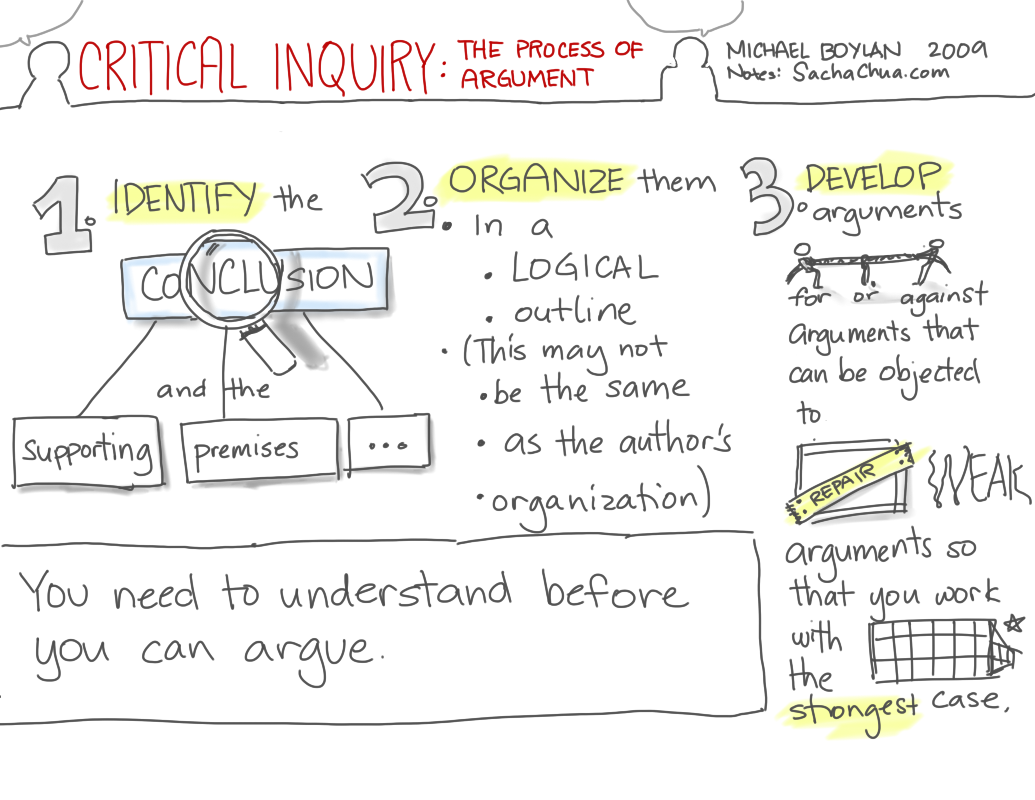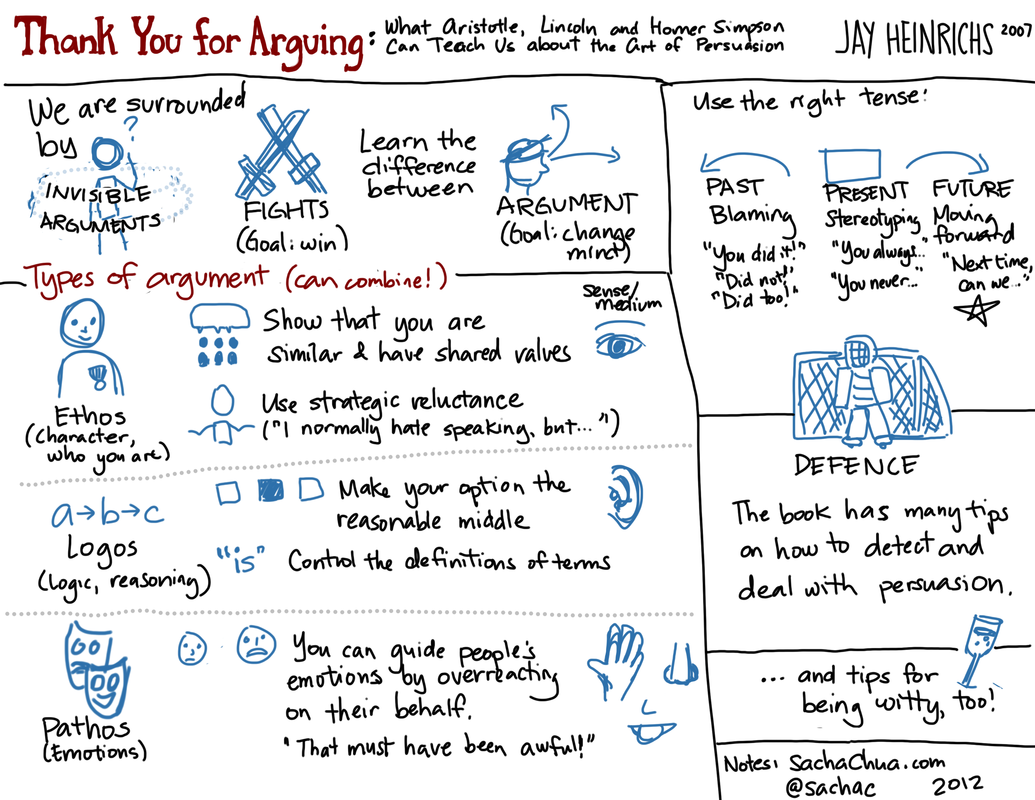Book: Critical inquiry: the process of argument
| book, readingCritical Inquiry: The Process of Argument
Michael Boylan, 2009, Westview Press
ISBN: 9780813344522
I wish I had read Critical Inquiry (or a book like it) before going to school. It would've made my required courses in philosophy, theology, and literature much more engaging and more rewarding. The tips in the book are straightforward:
- Identify the conclusion and the premises,
- Organize them in a logical outline, and
- Develop arguments for or against premises that can be objected to, repairing minor flaws so that you're fighting the strongest version of the argument.
This make sense. But for some reason, I didn't have that framework before. If I had thought of those classes as partly about debugging arguments, applying the same decomposition skills I loved to use in computer science, I would've enjoyed the courses a lot more and gotten a lot more out of them. Better late than never!
The book also shares classic structures for developing a response in support of or against someone's position. You outline the original position, develop the pros and cons, choose a position, state the strongest arguments of the opposing side, and refute those arguments with your own. Although this might feel a little formulaic–or too stifling for casual blog posts that start with captioned animals!–it's a good way to make sure you thoroughly examine different sides.
I'm going to experiment with using these ideas when writing blog posts. I think the bigger challenge for me is taking a position. I've discovered there are a number of things I can't help but get on my soapbox about, so there's a start. Essays can lead me to more questions and arguments. It'll be a fun way to discover what I think.





